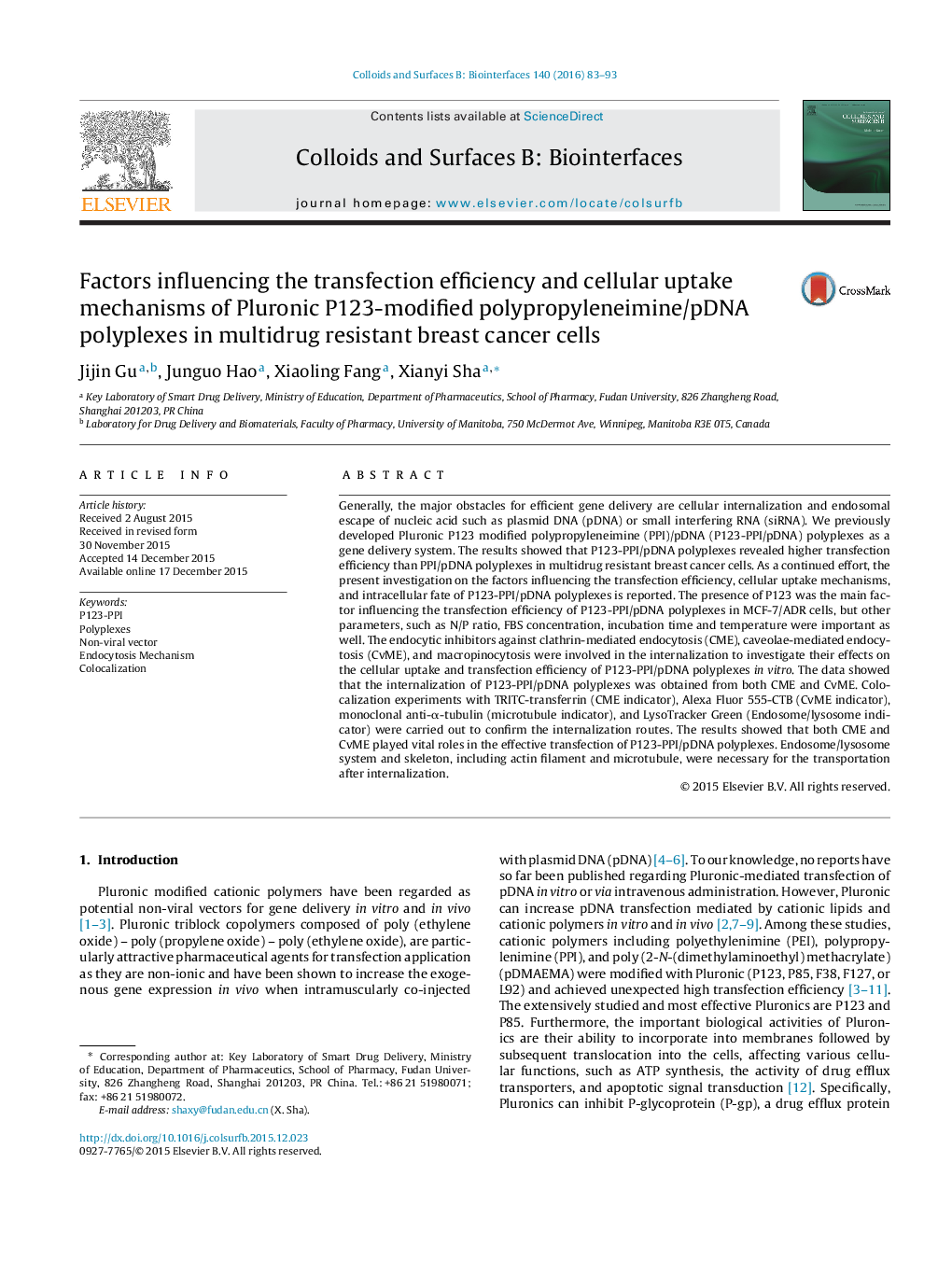| کد مقاله | کد نشریه | سال انتشار | مقاله انگلیسی | نسخه تمام متن |
|---|---|---|---|---|
| 599092 | 1454264 | 2016 | 11 صفحه PDF | دانلود رایگان |

• The factors influencing the transfection efficiency of P123-PPI/pDNA polyplexes.
• Effects of three kinds of inhibitors on the uptake and transfection of polyplexes.
• Co-localization of polyplexes with TRITC-Tf, Alexa Fluor® 555-CTB, microtubule indicator, and LysoTracker.
Generally, the major obstacles for efficient gene delivery are cellular internalization and endosomal escape of nucleic acid such as plasmid DNA (pDNA) or small interfering RNA (siRNA). We previously developed Pluronic P123 modified polypropyleneimine (PPI)/pDNA (P123-PPI/pDNA) polyplexes as a gene delivery system. The results showed that P123-PPI/pDNA polyplexes revealed higher transfection efficiency than PPI/pDNA polyplexes in multidrug resistant breast cancer cells. As a continued effort, the present investigation on the factors influencing the transfection efficiency, cellular uptake mechanisms, and intracellular fate of P123-PPI/pDNA polyplexes is reported. The presence of P123 was the main factor influencing the transfection efficiency of P123-PPI/pDNA polyplexes in MCF-7/ADR cells, but other parameters, such as N/P ratio, FBS concentration, incubation time and temperature were important as well. The endocytic inhibitors against clathrin-mediated endocytosis (CME), caveolae-mediated endocytosis (CvME), and macropinocytosis were involved in the internalization to investigate their effects on the cellular uptake and transfection efficiency of P123-PPI/pDNA polyplexes in vitro. The data showed that the internalization of P123-PPI/pDNA polyplexes was obtained from both CME and CvME. Colocalization experiments with TRITC-transferrin (CME indicator), Alexa Fluor 555-CTB (CvME indicator), monoclonal anti-α-tubulin (microtubule indicator), and LysoTracker Green (Endosome/lysosome indicator) were carried out to confirm the internalization routes. The results showed that both CME and CvME played vital roles in the effective transfection of P123-PPI/pDNA polyplexes. Endosome/lysosome system and skeleton, including actin filament and microtubule, were necessary for the transportation after internalization.
Figure optionsDownload as PowerPoint slide
Journal: Colloids and Surfaces B: Biointerfaces - Volume 140, 1 April 2016, Pages 83–93